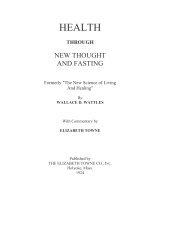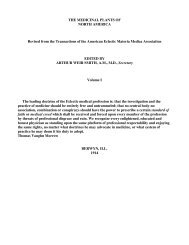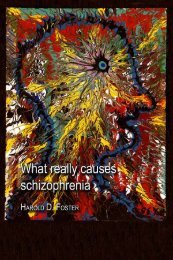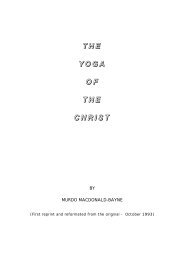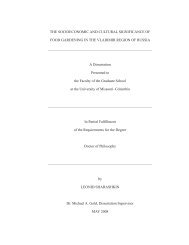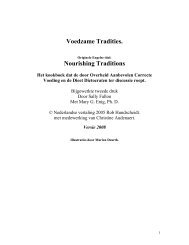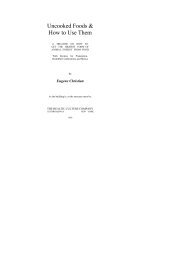FACTORS OF SOIL FORMATION - Midlands State University
FACTORS OF SOIL FORMATION - Midlands State University
FACTORS OF SOIL FORMATION - Midlands State University
Create successful ePaper yourself
Turn your PDF publications into a flip-book with our unique Google optimized e-Paper software.
concentration, etc., are also altered. The simplest method of<br />
expressing the foregoing assumptions of interrelationships is in form<br />
of an equation, written as follows:<br />
F (s 1 , s 2 , s 3 , s 4 , • • • ) = 0 (1)<br />
It means that the soil is a system the properties of which are<br />
functionally related to each other.<br />
Equation (1) is far too general to be of practical value to soil<br />
science. In fact, it is merely the definition of any natural body written<br />
in symbolic form. In order to distinguish soil from other natural<br />
systems, certain limits must be given to the properties s 1 , s 2 , etc. The<br />
magnitudes of the properties must not exceed or fall below certain<br />
characteristic values. To quote an example, the water content of a soil<br />
must be below, say, 95 per cent on a moist basis, or else the system<br />
would not be called "soil" but "swamp," or "lake," or "river."<br />
No general attempt as yet has been made to assign quantitative<br />
limits to soil properties, and, therefore, it is not possible at the present<br />
time to contrast soils sharply with other natural bodies on the basis of<br />
Eq. (1). However, if we specify for the moment that soils are portions<br />
of the upper weathering layer of the solid crust of the earth, the limits<br />
of some of the properties of Eq. (1) are roughly set.<br />
Soil and Environment.—The latter contention requires a closer<br />
examination. Just where on the surface of the earth are the soils<br />
proper, and what constitutes the boundaries between soils and other<br />
natural bodies that also are part of the upper portion of the earth?<br />
It is generally realized that the soil system is only a part of a<br />
much larger system that is composed of the upper part of the<br />
lithosohere, the lower part of the atmosphere, and a considerable part<br />
of the biosphere. This larger system is illustrated in Fig. 8.<br />
A number of Russian soil scientists designate this larger system<br />
as soil type (climatic soil type). Glinka (3) writes:<br />
Contrary to the majority of foreign soil scientists, Russian pedologists<br />
choose the soil type as a unit of classification instead of soil masses,<br />
regarding the soil type as a summary of the external and internal properties of<br />
a soil. Thus, speaking of chernozem, for instance, the Russian pedologist saw<br />
not only a natural body with definite properties, but also its geographical<br />
position and surroundings, i.e., climate, vegetation, and animal life.<br />
This Russian idea of soil type is nearly identical with the soil<br />
geographer's concept of natural landscape.<br />
Most soil scientists deal only with part of this wider system,<br />
namely, the soil per se. The remaining part is called "environment."<br />
Often it is not sufficiently realized that the boundary between soil and<br />
environment is artificial and that no two soil scientists have exactly<br />
the same enclosure of the soil system in mind. A glance at Fig. 8<br />
provides a felicitous illustration. Suppose we approach the surface<br />
from the atmosphere, just where does the soil begin? Is the forest litter<br />
a part of the soil or of the surroundings? If one is inclined to discard<br />
the freshly fallen leaves or needles and include only the decomposed<br />
organic material in the soil system, what degree of decomposition is<br />
necessary? Similar difficulties are encountered in the sampling of<br />
virgin prairie soils. Living grasses are not soil, but dead parts<br />
gradually become incorporated into the soil matrix. In practice, a<br />
rather arbitrary separation between vegetative cover and soil becomes<br />
necessary.<br />
If we approach soils from below, similar problems are<br />
encountered. There is no sharp boundary between undecomposed<br />
rock, weathered rock, soil material, and soil. Although criteria for<br />
distinguishing soils from unconsolidated geological deposits may be




